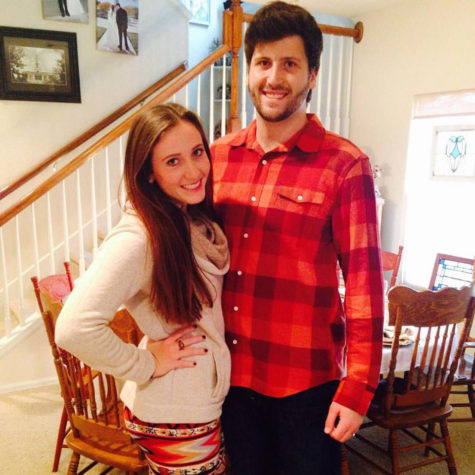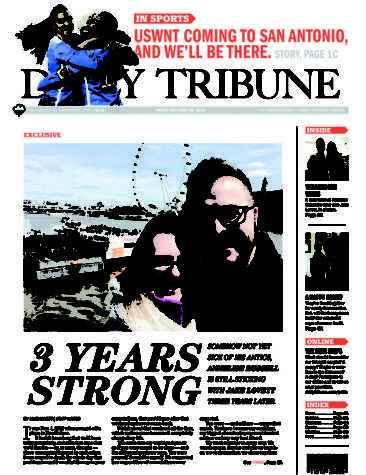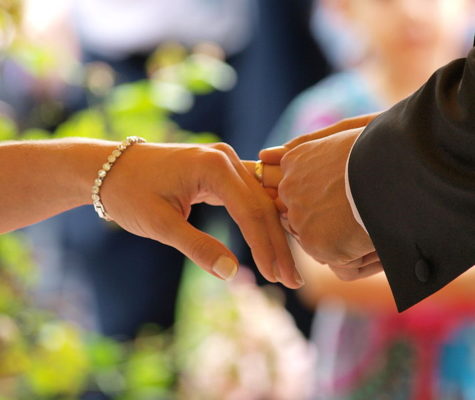Pagan weddings provide root of familiar terms
October 22, 2010
Every year an estimated 36 million children celebrate Halloween. Most of us have celebrated this spooky holiday since before we can remember.
Despite the popularity, many of those who celebrate it know nothing about Halloween’s past or origins.
According to a book titled “Modern Paganism in World Cultures: Comparative Perspectives” by Michael F. Strmiska, this holiday was inspired by memories of ancient Celtic traditions from the festival Samhain, which is held at the end of October. At this time, communication with the dead or spirits is said to be easier.
“[At this time] the veil between the Living World and the Spirit World is at the thinnest,” said Mike Davis, the founder and high priest of the Church of Sacred Grove in Des Moines.
During the festival, severed heads were displayed in doorways to bring good luck and protect the people. This tradition has been replaced by the ever-so-popular jack-o’-lantern.
The phrase “trick or treat” refers to the pagan belief in giving food and drink to ancestors to avert the dead’s possible anger.
Pagans generally are indistinguishable from the general public, but there are certain beliefs and wedding traditions that set them apart.
Barbara Jane Davy, author of the book “Introduction to Pagan Studies,” wrote, “Spirituality is integrated into their daily life in work and leisure. For many pagans, an important aspect of this is their relationship with the natural world.”
According to Davis, the spiritual world and natural world are seen as combined in the pagan religion. Both are alive and honored in everyone.
Many pagan weddings are held outside near the time of a full moon.
“The full moon is a time for new beginnings,” Davis said, “and what better way to honor the goddess and god than to begin a new life with one that you love.”
The wedding is usually set up in a circle format instead of an aisle and rows. A circle is made out of flowers, herbs and salt. Outside the circle is where the guests sit, and the only people who enter the circle are the couple and the priest or priestess.
The groomsmen, also known as guides, are set up at positions called “gates,” which are located at the north, east, south and west sides of the circle.
When the bride enters the circle, the priest will walk slowly around and pause at each “gate” to call the elements: earth, air, fire and water. This action is called “casting the circle,” and it blesses the joining of the couple
Next, a bell is rang three times to signal the most beloved part of the wedding, the handfasting.
According to Davy, handfasting represents “commitment for a year, or as long as the love shall last.”
During the handfasting ceremony couples bind hands in a figure-eight form. Davy said this is an ancient symbol of joining man and woman.
While holding hands, the couple whispers their vows. The priest gently binds their wrists with a red chord that symbolizes love. The knots of the chord signify bond of their commitment.
Many other colored chords are used as well, and each symbolizes a different thing. To most pagans, color has always been link to symbolism and magic.
Many couples will return to a priest a year and a day later to repeat their vows where the cord is tightly knotted to show the solidity of the union.
There are mixed traditions with handfasting. Davis said that some couples see the handfasting as the “official, legally binding wedding.” Therefore, sometimes the handfasting is only performed once.
According to Pagan Wedding Planners, this tradition is where the saying “tie the knot” came from.
After this, the rings are exchanged and the couple jumps the over the besom broom. Davis describes this as a “fun ceremony.”
This broomstick symbolizes the sexual union between man and woman. This action is done to ensure love and happiness.
Traditionally, the chord from the handfasting is removed after the ceremony, but some choose to stay connected until consummation of the marriage.
After all of this, the wedding reception follows. Wedding receptions are similar to other receptions. Davis said they incorporate “food, fellowship and well wishes to the couple.”
Davis said there are between 750,000 and 1 million people who identify as pagan in the U.S. and Canada. Many of them have become “disenchanted with other religions.” This disenchantment has lead to a fast-growing religion.
Because paganism is getting more popular, it is important to know the traditions, but it also important to note that the pagan faith has the same purpose to its weddings, which is to unite a couple in love.











